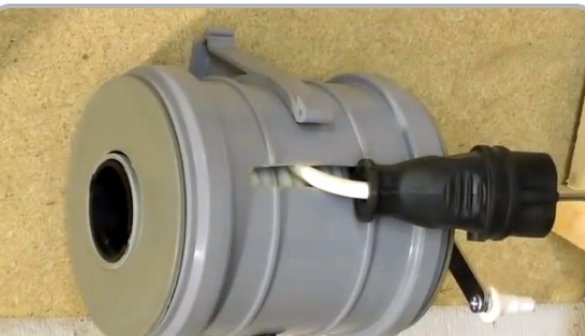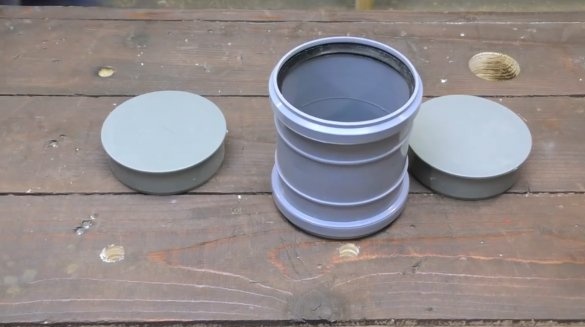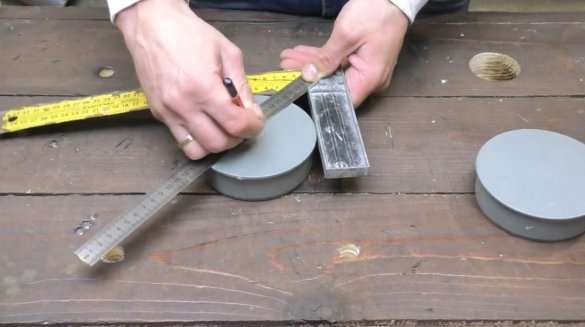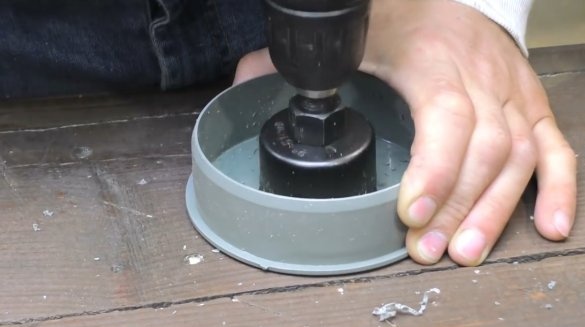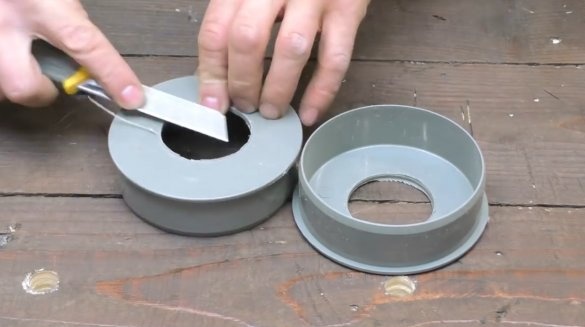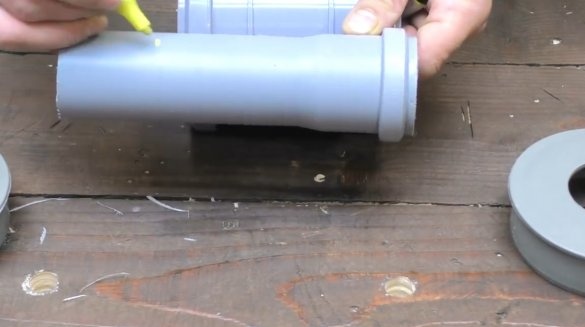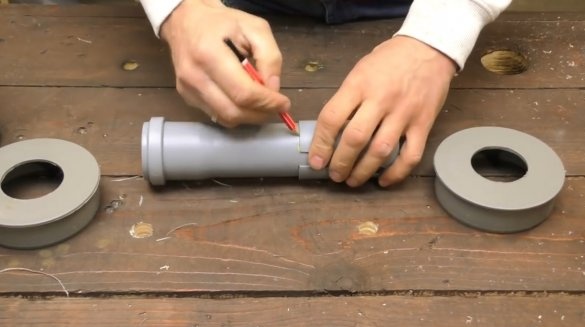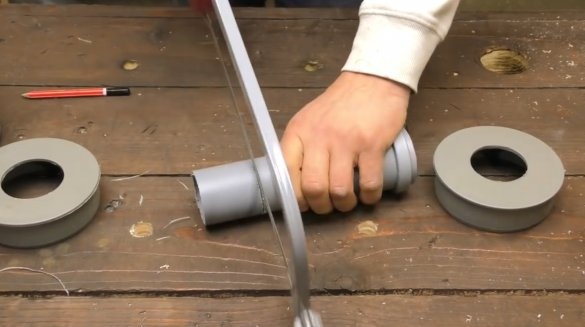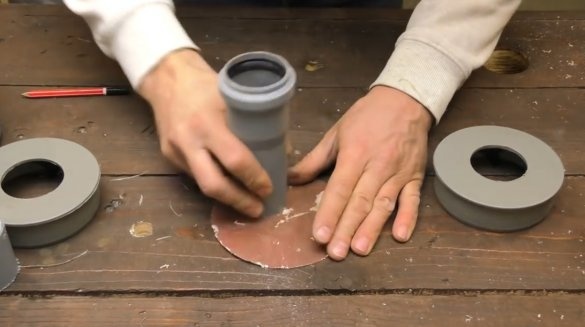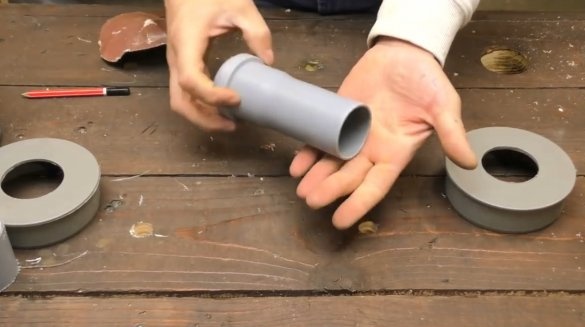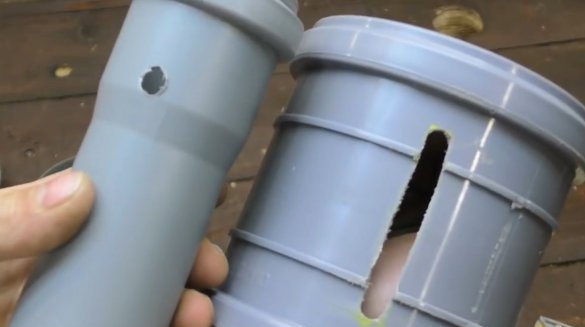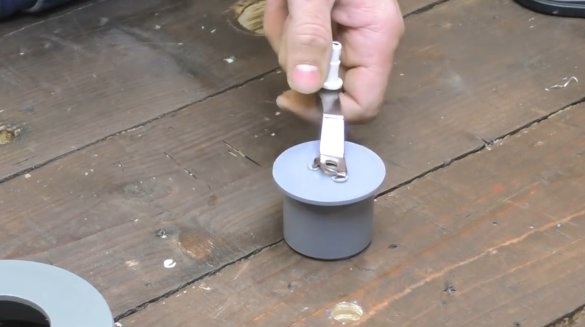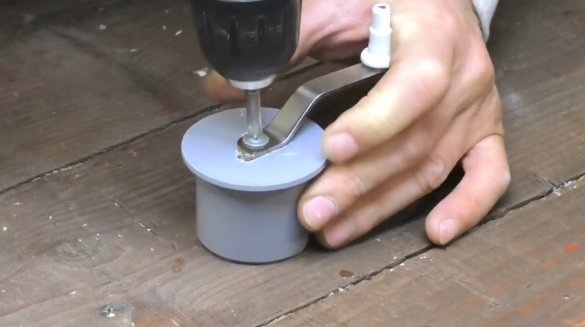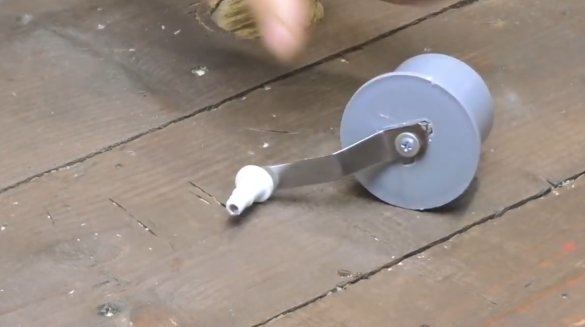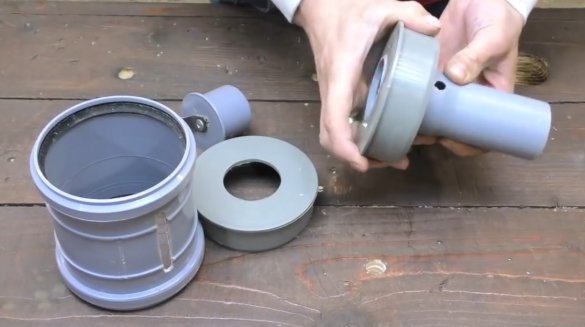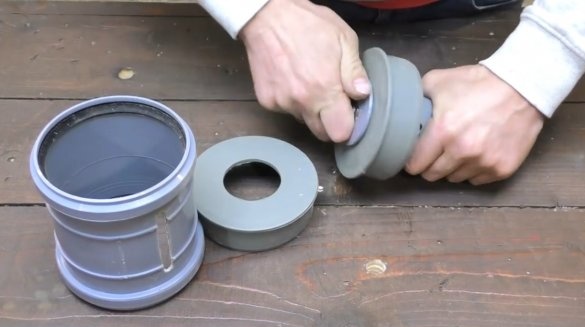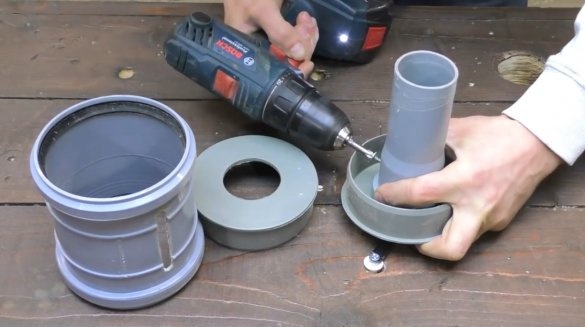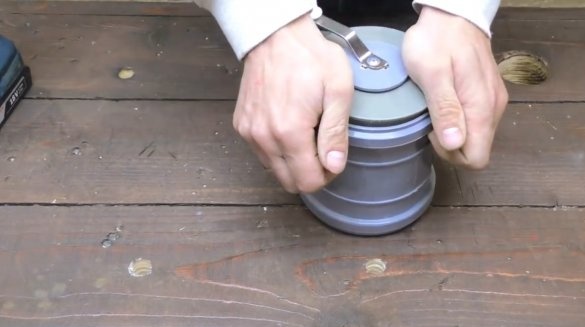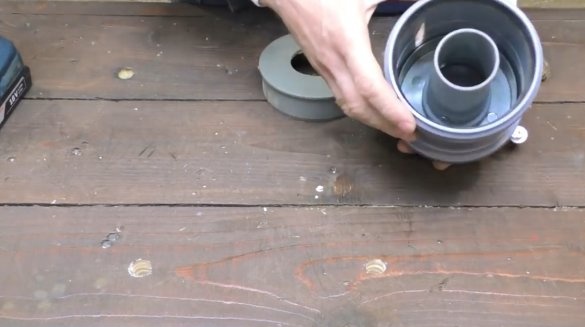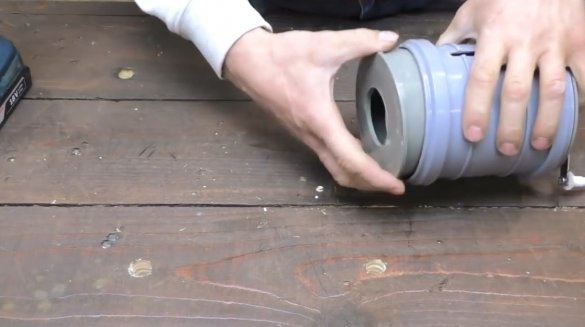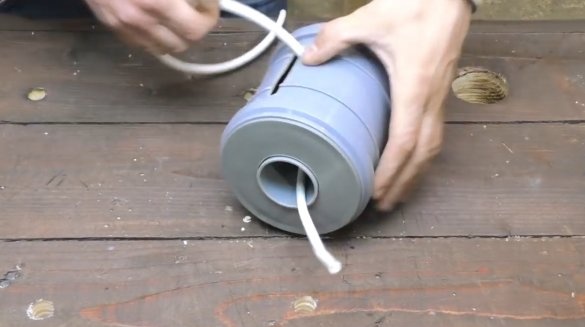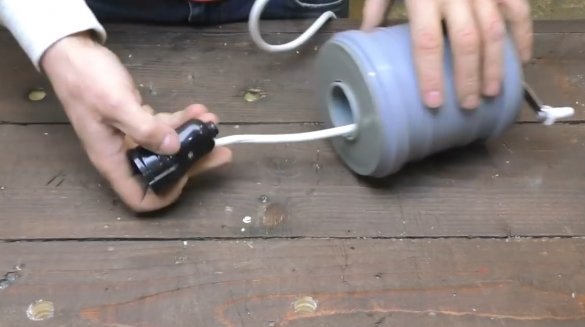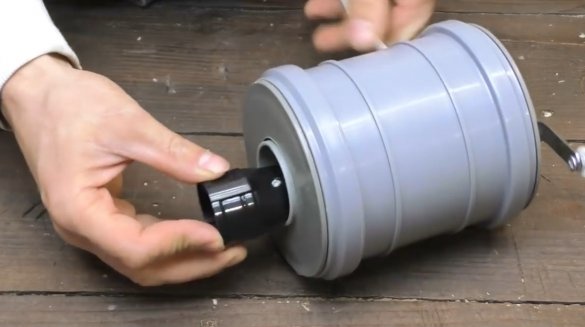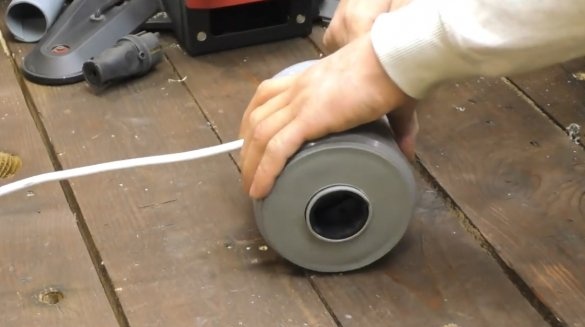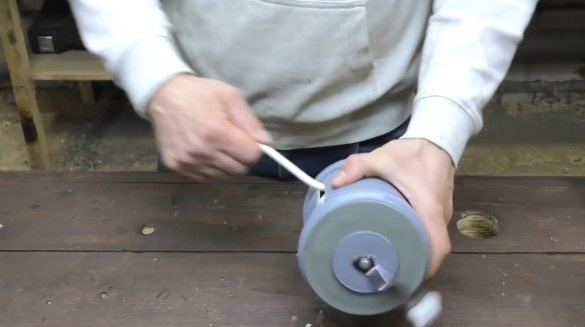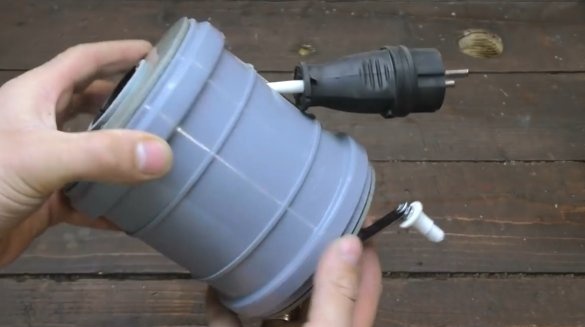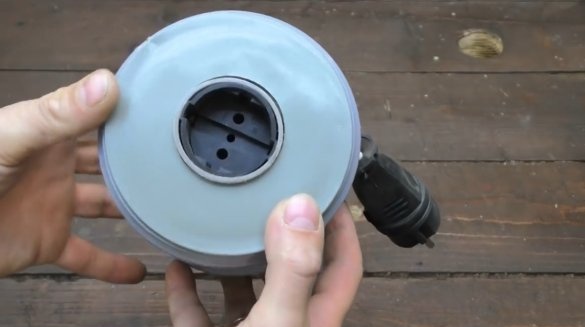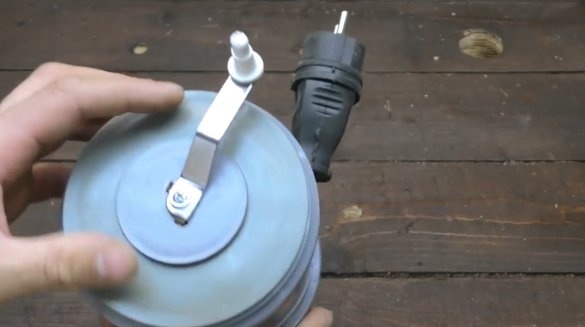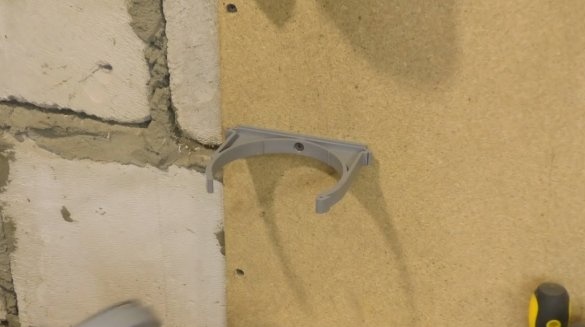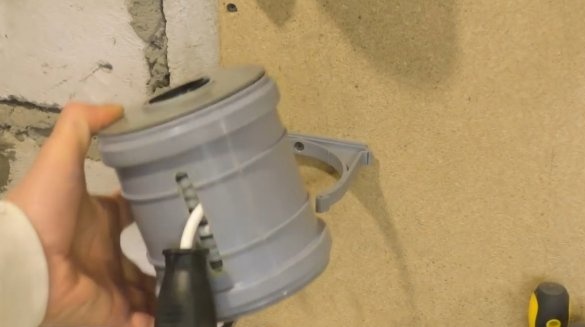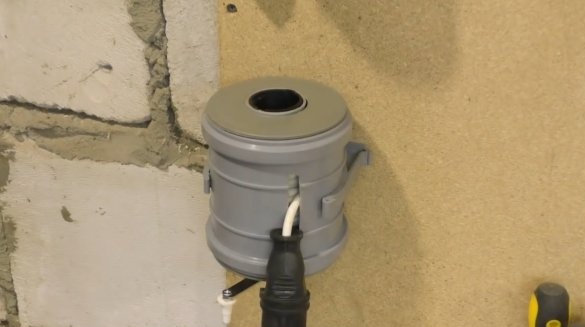Everyone who has encountered construction or installation work knows well how long it takes to unwind and rewind the wires to connect the tool.
In this article, the creator of the YouTube channel "Creates DIY" will tell you how quickly and easily you can make a cable holder from PVC sewer pipes.
Materials
- Plug, socket
- 5 m cable 2X2.5 mm
- Sewer PVC pipes, plugs
- Self-tapping screws with a press washer
- handle
- Sandpaper.
Instruments, used by the author.
- Hacksaw, knife
-
-
-
- Ruler, square, marker.
Manufacturing process.
So, the wizard begins by preparing the plugs. Marks the center on them with the help of a square and a ruler. It is enough to draw a line along the ruler, turn the workpiece, and mark the second line. So quickly you can find the center of the circle. Drills an initial hole.
Then he flips the plug and drills the crown. The burrs are removed with a knife.
Trying on a segment of 2 inch pipe, it will be a sleeve. He puts on a cut piece of pipe, marks the cut line.
Slices the necessary workpiece, cleans its end face with sandpaper.
On the main body and the sleeve marks the holes for the cable, and cuts them out.
Marks the center on the plug for a 2-inch pipe, heats the pins on the handle, and fuses them into the end of the sleeve. Additionally fixes with a self-tapping screw.
Inserts the sleeve into the plug hole, closes the sleeve with a handle. On the inside of the sleeve, a couple of screws are screwed so that it is rigidly connected to the plug and does not slip.
All items are prepared, you can collect device.
Through the external hole, and the hole in the sleeve passes the cable, plugs in the socket, and inserts it into the sleeve.
Everything is ready, now the cable can be quickly unwound and unwound.
This is such a compact carry.
For convenience, you can fasten a clip to the wall, then the carrying can be easily fixed and removed if necessary. Of course, the size of the device can be increased, or reduced to suit your tasks. Now the cable will not get confused, and the cleaning time will be much less.
Thanks to the author for a simple but useful tool for the workshop and installation work!
All good mood, good luck, and interesting ideas!

